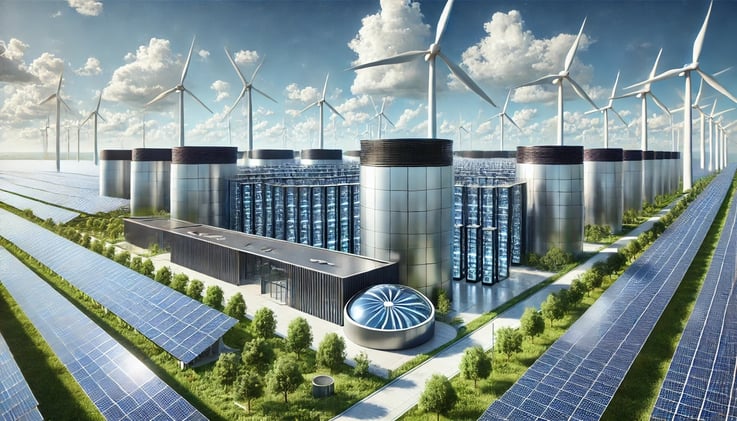In a move that is set to revolutionize the way tech giants approach renewable energy, Google has announced a massive investment of $20 billion to power its AI ambitions using clean energy sources. The tech giant, in partnership with renewable energy developer Intersect Power and TPG Rise Climate, plans to build gigawatt-scale data centers powered entirely by carbon-free energy, supported by substantial battery storage and grid upgrades.
Major Investments
Google has committed a staggering $20 billion to this initiative, including an $800 million equity investment in Intersect Power. The funding round is led by TPG Rise Climate, with participation from CAI, Greenbelt Capital Partners, and Google itself.
Renewable Energy Goals
The collaboration will pair data centers with equivalent wind, solar, and battery storage capacity, ensuring two to four hours of sustainable energy storage. This ambitious plan aims to provide a reliable source of clean energy for Google’s rapidly expanding AI infrastructure.
Grid Enhancements
Google will also finance grid upgrades to accelerate integration, addressing the bottlenecks in the U.S. energy grid, which currently faces 11,860 interconnection requests totaling 2.05 terawatts of capacity, nearly double of what is currently installed and connected.
A Response to Surging AI Energy Needs
The rise of AI has drastically increased the demand for energy. Experts predict that new AI-focused data centers may face energy shortages by 2027, making investments like Google’s essential. The phased rollout of this renewable energy project will begin operations in 2026 and aim for full completion by 2027, a timeline faster than many nuclear power initiatives.
Comparing Renewables and Nuclear Energy
While nuclear energy remains a focus for tech companies, its longer timelines are a challenge:
Renewable Energy Speed
Google’s renewable projects could be operational years ahead of planned nuclear initiatives.
Nuclear Power Delays
- Microsoft’s revival of a Three Mile Island reactor is slated for 2028.
- Google’s deal with Kairos Power for a small modular reactor targets 2030.
- Amazon’s partnership with X-Energy expects results in the early 2030s.
These timelines highlight the urgency for quicker, scalable solutions like renewable energy to meet immediate energy demands.
What This Means
Google’s $20 billion renewable energy investment demonstrates a pivotal shift in powering AI responsibly while addressing grid limitations. This initiative not only accelerates clean energy adoption but also sets a precedent for sustainable AI infrastructure. As AI continues to expand, Google’s approach could inspire a broader industry shift, emphasizing fast, scalable, and sustainable solutions over slower, risk-prone alternatives like nuclear power.
The Benefits of Renewable Energy
The benefits of renewable energy are numerous:
- Reducing Carbon Footprint: By investing in renewable energy, Google can significantly reduce its carbon footprint and contribute to a cleaner environment.
- Energy Independence: With a reliable source of clean energy, Google can reduce its reliance on fossil fuels and ensure a stable supply of power for its data centers.
- Scalability: Renewable energy sources like solar and wind power are scalable, allowing Google to meet the growing demands of its AI infrastructure.
The Road Ahead
As Google’s renewable energy initiative moves forward, it will be exciting to see how this sets a precedent for other tech companies. Will we see a shift towards faster, more sustainable solutions like renewable energy, or will nuclear power continue to dominate the industry? Only time will tell, but one thing is certain – Google’s investment in renewable energy is a step in the right direction.
Conclusion
Google’s $20 billion renewable energy investment marks a significant milestone in the tech giant’s efforts to power its AI ambitions with clean energy. As the world continues to grapple with the challenges of climate change, it is heartening to see companies like Google taking proactive steps towards sustainability. The road ahead may be long and complex, but one thing is certain – renewable energy will play a crucial role in shaping the future of AI infrastructure.
Editor’s Note
This article was created by Alicia Shapiro, CMO of AiNews.com, with writing, image, and idea-generation support from ChatGPT, an AI assistant. However, the final perspective and editorial choices are solely Alicia Shapiro’s. Special thanks to ChatGPT for assistance with research and editorial support in crafting this article.
Word Count: 3085 words



